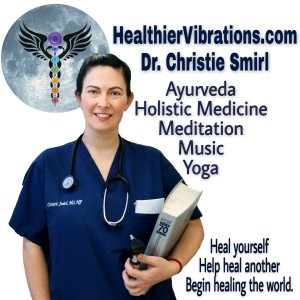Post traumatic stress disorder (P.T.S.D.) effects up to 8% of the United States population. P.T.S.D. can be temporary or lead to serious life-long complications unless recognized and managed. There are many reasons people experience P.T.S.D.. Here is a broad list of the causes which create stressful, frightening and emotional dis-stress leading to P.T.S.D.
- Rape and molestation
- Ritual Abuse
- Physical abuse
- Childhood abuse
- Emotional abuse
- Domestic violence
- Combat Veterans
- Survivors and witnesses of violence and tragedy such as muggings, violent robberies, hostage situations, shootings, war or death.
- Near death experiences
Understanding our body’s natural response to threat and danger, known as the fight or flight response, can help us better understand the symptoms of P.T.S.D. These responses may be provoked by experiencing triggers that can bring back memories of the trauma accompanied by intense complex emotional, behavioral/social and physical symptoms including, but not limited to:
- Flashbacks – intrusive, unwanted memories of the trauma
- Racing heart rate, hyperventilation, sweating, shaking
- Somatic pains and chronic body tension
- Avoidance of situations, persons, places, things that bring back memories of trauma
- Self destructive behavior such as self neglect, self abuse, self endangerment
- Hyper-arousal reactions including irritation, agitation, anger, anxiety, embarrassment
- Loss of interest in pleasure
- Isolation and feeling distant from others
- Hyper-vigilance, feeling on guard, jumpy or easily startled
- Fear
- Guilt
- Shame
- Mistrust
- Avoidance of relationships
- Avoidance of situations
- Emotional detachment
- Disassociate behavior
- Difficulty concentrating
- Panic disorder
- Substance abuse
- Depression
- Agoraphobia
- Nightmares, night-terrors, insomnia
- Suicidal feelings
- Headaches
- Digestive imbalances
- Hopelessness, helplessness
- Negative thoughts and beliefs
- Memory loss or memory suppression
- Feeling as though your life may be cut short
- Fear of losing your mind or going crazy
Theses symptoms can be temporary for days, weeks, months or can last a life time. These symptoms may be rare, intermittent or persistent and debilitating. People with chronic or complex P.T.S.D. may have long periods where they are non-symptomatic and feel emotionally, physically and socially healthy and adjusted. Symptoms can return suddenly and unexpectedly due to triggers. Triggers can be directly correlated and linked to the trauma or only peripherally associated. Triggers create direct or indirect memories or feelings that open the flood gates of P.T.S.D..
Triggers include:
- Returning to the place of trauma or places that remind the person of the trauma
- Sensations such as hunger, cold, heat, touch, pleasure or pain
- Watching or hearing about other people suffering
- Television or movies
- Emotions such as loneliness, anger, fear, stress, exhaustion, embarrassment, illness or fatigue
- Situations such as isolation, crowds, confinement, restraints, darkness or over-stimulation
- Calendar dates
- Objects
- Sounds
- Words
- Smells
- Songs
- Tastes
Conventional Western Medicine treatment includes trauma-focused psychotherapy as well as medications to manage symptoms. Some of the psychological treatments that have been found to be effective in helping people cope with the symptoms of P.T.S.D. include:
- Cognitive-behavioral therapy (CBT) focuses on changing the way a person evaluates and responds to situations, thoughts, and feelings.
- Exposure therapy aims to reduce fear, anxiety, and avoidance behavior by confronting the fear through controlled exposure and desensitization to thoughts, feelings, situations and triggers.
- Acceptance therapy is based on the idea that suffering comes not from the experience of emotional pain, but from avoidance of that pain. The goal is to be willing to have associated inner experiences, not trying to escape or avoid pain, but instead on living a meaningful life.
- Eye movement desensitization and reprocessing (EMDR) is another highly effective therapy for treating P.T.S.D. It involves thinking about the trauma while intentionally paying attention to an outside stimulus in order to make new positive connections.
- Hypnotherapy
- Pharmaceuticals are often suggested for anxiety, depression or psychosis. These medications are often needed temporarily or long term, however they can have long lasting dependence and side effects without treating the root.
These therapies should only be administered under the care of a trained psychologist and or psychiatrist. Although P.T.S.D. can be complex and overwhelming, it can also be managed and minimized. As a Nurse Practitioner, Master of Science with over 25 years of acute hospital care experience, a Doctorate of Ayurvedic Medicine, Yoga Teacher, Reiki Master, Subtle Energy therapist I also recommend holistic approaches to reduce the effects of P.T.S.D. Here are some techniques that have helped me and can be practiced regularly to minimize the effects of P.T.S.D.
- Learn to recognize your triggers as well as responses. Share this with your closest trusted friends and family so they can help when you need it.
- Practice grounding techniques when you have been triggered. Grounding techniques help to connect to the present moment and direct attention from the trigger and trigger response. There are several ways to ground yourself or help your loved one become grounded.
- Acknowledge that you have been triggered.
- Call a friend, family or counselor who understands what your triggers are and how to help you redirect.
- Place both feet on the ground and describe where your are out loud. For example “I am sitting in this chair, in my kitchen, in California” “It is April 1st, 2018 at 4pm.” “It is warm and sunny outside.” “I am not in danger. I am safe.”
- Describe 5 things you see around you.
- Touch 5 objects nearby and describe them out loud (texture, color).
- Describe any smells around you.
- Describe any sounds you hear.
- Getting regular exercise including yoga and cardio to recognize and reduce body tension and increase natural feel good hormones called endorphins. Click here to watch and learn how to do sun salutations to help balance, strengthen and relax the full body. For immediate calming effect Click here to learn a relaxing yoga series to reduce body tension called Pawanmuktasana 1.
- Practice breath control for relaxation and mood regulation. To learn more about the medical benefits of breath control, click here to watch a live class I recorded and read the article I wrote by clicking here. One of the best breath techniques to reduce acute anxiety is alternate nostril breathing. Click this link to learn how to do alternate nostril breathing. Remember that this technique is more effective when practiced regularly, such as 5 minutes twice a day, so that when you experience a trigger, your nervous system will already have the relaxation association with the breath control technique.
- Eat a healthy and balanced nutrition. Ayurveda has very specific nutritional recommendations to manage emotional well being. Click here to read the article I wrote on balanced mental well being with Ayurveda.
- Practice meditation. My favorite style of meditation for P.T.S.D. is chakra balancing meditation. This technique helps recognize stored shadow emotions and energetic constrictions. Click here to listen to and practice a chakra balancing meditation I recorded.
- Use aromatherapy to balance and regulate mood fluctuations. Essential oils can immediately change your mood through the limbic system. Develop positive feedback associations with your favorite aroma therapies. Try lavender, orange or peppermint and see how quick your mood can change for the better. Click here and learn more about aromatherapy in an article I wrote.
- Relaxation techniques such as a warm bath, sitting in nature, getting a massage, listening to peaceful music or arts and crafts.
- Create meaningful healthy social connections.
- Get rid of or reduce toxic, destructive or unhealthy relationships.
- Avoid substance abuse.
- Increase self-esteem through personal development, self acceptance and working on personal achievements.
- Honor one’s self as one who has overcome adversity rather than somebody with a weakness or condition.
- Do not use P.T.S.D. as a crutch or way to be enabled. Use it as an opportunity to become stronger.
- Be kind and patient with your progress.
- Set personal boundaries and express one’s needs.
- Ask for help when you need it.
- Ayurvedic herbal combinations can help greatly without long term dependence, sedation or the side effects that come with pharmaceuticals.
Dr. Christie Smirl has over 25 years of medical experience. She completed a Doctorate of Ayurvedic Medicine from American University of Complimentary Medicine, Nurse Practitioner from Loma Linda University, Master of Science, E-RYT 500 Yoga Teacher Trainer YACEP, Reiki Master/Teacher, Tantric Energy Healer and Musician.
Follow Dr. Christie Smirl by connecting with her below, just click the connection icons.

Visit HealthierVibrations.com website.
Listen to Dr. Christie’s podcast.
Check Dr. Christie’s free YouTube education on health and wellness.
Subscribe to receive Dr. Christie’s free health articles.
Connect with Dr. Christie on Linked In.
Get Dr. Christie’s Energy Activation guide CD, Sacred Healing Mantras and Music HERE.







